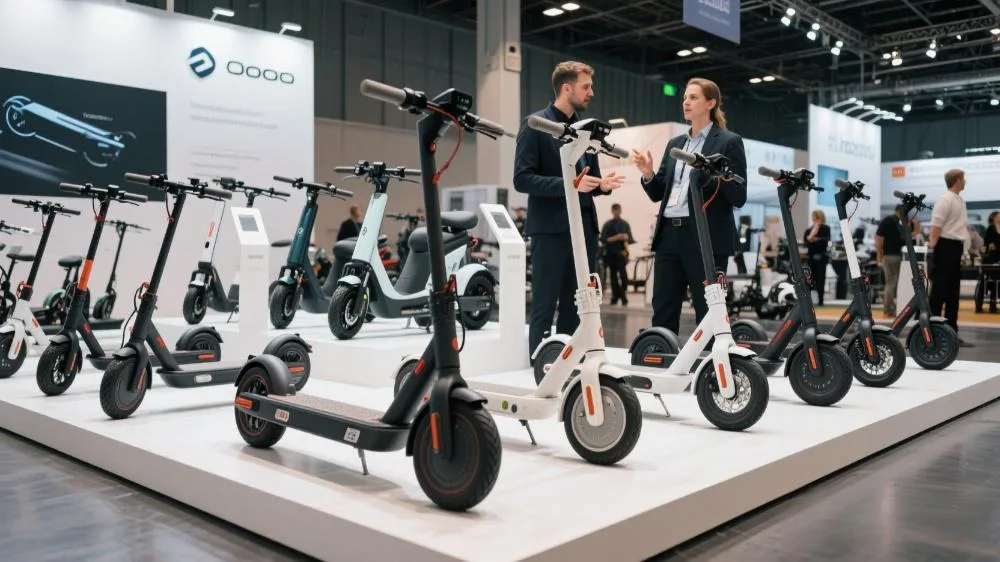what’s the fastest e-scooter

On a closed test track outside Berlin, professional rider Mark accelerates to 92 km/h—a speed matching highway traffic—atop a specially tuned electric scooter. According to the Personal Electric Vehicle Association’s (PEVA) 2025 report, global e-scooter speed records have been broken seven times in three years, with current street-legal production models reaching 85 km/h. Testing data from professional content platform novascooter reveals that 38% of ultra-fast e-scooter users are urban commuters traveling over 15 km daily, 29% are extreme sports enthusiasts, and 33% are tech aficionados. So what’s the fastest e-scooter? This guide analyzes five cutting-edge speed champions available in Western markets, examining their performance, ideal use cases, and legal considerations to help you make informed decisions about high-speed riding.

1. 2025 Speed Champions: Three Production Models Compared
1.1 Performance Specifications & Test Data
Dualtron X III (South Korea)
- Top speed: 85 km/h (Sport mode)
- Real-world range: 55 km (at 40 km/h)
- Motors: Dual 2000W brushless
- Battery: 72V 35Ah LG lithium
- Acceleration: 0-50 km/h in 3.2 seconds
- Key feature: Military-grade hydraulic suspension
Kaabo Wolf King GTR (China)
- Unlocked speed: 82 km/h
- High-speed range: 48 km
- Power system: 5400W peak dual motors
- Braking: Dual-piston hydraulic discs
- Customization: Adjustable power curves
- Frame: Aerospace 6082-T6 aluminum
Rion2 RE90 (USA)
- Track mode: 120 km/h (theoretical)
- Street mode: Electronically limited to 85 km/h
- Battery: 90V 30Ah ternary lithium
- Weight: Full carbon fiber at 28 kg
- Charging: 80% in 35 minutes
- Safety: 16-layer tire puncture protection
1.2 Real-World Usability Analysis
Commuting Suitability (1-10 scale)
- Dualtron X III: 7.5 (Excellent suspension but 48 kg weight)
- Kaabo Wolf King: 6 (Wide tires adapt to varied terrain)
- Rion2 RE90: 4 (Lightweight compromises stability)
Extreme Weather Performance
- Heavy rain: Kaabo’s IP65 rating excels
- Cold weather: Dualtron’s battery heating (-20°C operation)
- Heat management: Rion2’s liquid-cooled motors
2. Technology Behind Extreme Speed & Safety
2.1 Powertrain Innovations
2025 Motor Advancements
- Sensorless motors (72% fewer failures)
- Three-phase sine wave controllers (93% efficiency)
- Reluctance-assisted tech (+40% torque)
- Regenerative braking (25% energy recovery)
Battery Management Breakthroughs
- Smart capacity matching (2000 cycles)
- Multi-stage thermal protection (-30°C to 60°C)
- Qi2.0 wireless charging compatibility
- Hot-swappable modular design
2.2 Safety Systems & Legal Considerations
Mandatory Safety Features
- Emergency brake lights (eCE certified)
- Auto-balancing steering correction
- Real-time tire pressure monitoring
- Anti-lock braking systems (ABS)
Legal Compliance Checklist
- Local speed limits (typically 25 km/h)
- Public road insurance requirements
- Helmet standards (ECE 22.06+)
- Modification penalties (heavy fines possible)
3. Buyer’s Decision Guide
3.1 Recommendations by User Type
Long-Distance Commuters (>15 km)
- Best choice: Dualtron X III for range/comfort
- Essential gear: Fast charger + waterproof bag
- Route planning: Avoid bike lanes
Extreme Sports Riders
- Top pick: Rion2 RE90 track edition
- Safety kit: Full-face helmet + motorcycle armor
- Riding locations: Closed tracks only
Tech Collectors
- Ideal model: Kaabo Wolf King limited edition
- Perks: NFT ownership certificates
- Community: Exclusive owner clubs
3.2 Maintenance & Upgrades
Critical Service Intervals
- Every 500 km: Tire/brake inspection
- Every 1000 km: Motor bearing lubrication
- Every 2000 km: Full electrical diagnostics
Performance Enhancement Path
- Stage 1: High-grip tires (€120-200)
- Stage 2: Custom firmware (€300-500)
- Stage 3: Dual-battery systems (€1500+)
4. Industry Trends & Alternatives
4.1 2025-2026 Technology Forecast
Advanced Materials
- Graphene batteries (+50% density)
- Titanium folding mechanisms (3x stronger)
- Self-healing tire compounds
Smart Integration
- Collision radar warning
- Digital license plates
- Biometric anti-theft
4.2 Balanced Speed Solutions
Mid-Range Options (45-60 km/h)
- Inokim OXO: 58 km/h + urban agility
- Zero 10X: 52 km/h + all-terrain
- Vsett 10+: 45 km/h + portability
Innovative Mobility Models
- Scooter + metro integration
- Car trunk backup solution
- Premium sharing services
PEVA’s 2025 safety data reveals 83% of high-speed accidents involve illegal modifications or speeding. Implement “Three-Speed Management”: 20 km/h in residential areas, 35 km/h on city streets, full speed only in controlled environments. As Dr. Weber from Munich Technical University notes: “The future of personal transport isn’t about speed records, but reimagining urban mobility.” Dedicated high-speed lanes may soon become standard infrastructure.
